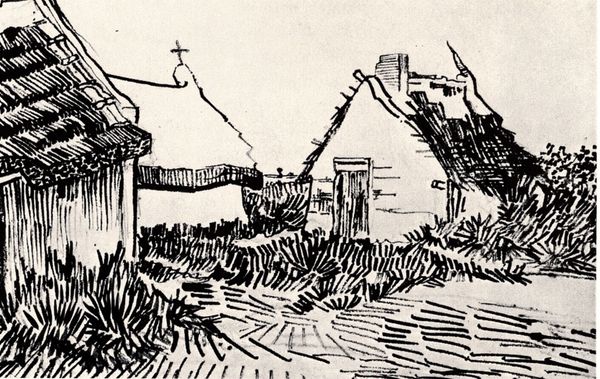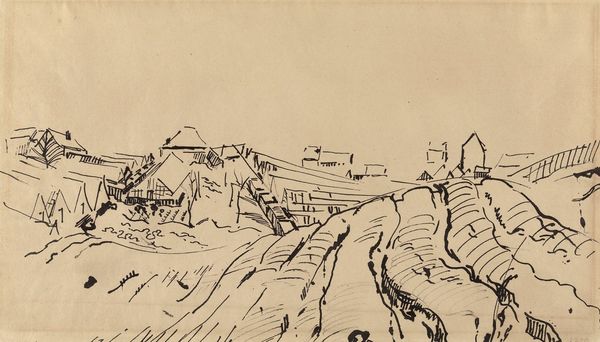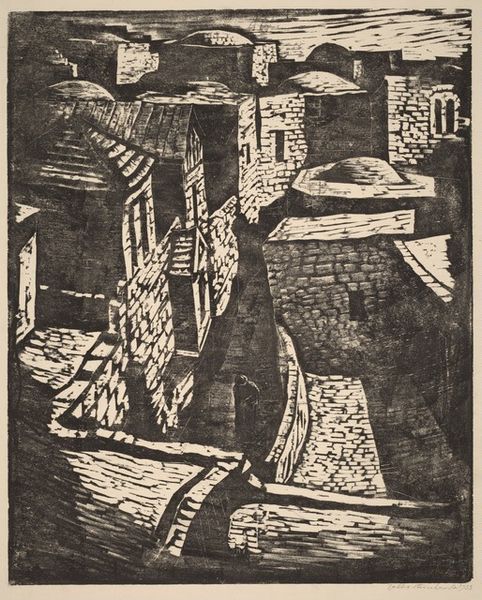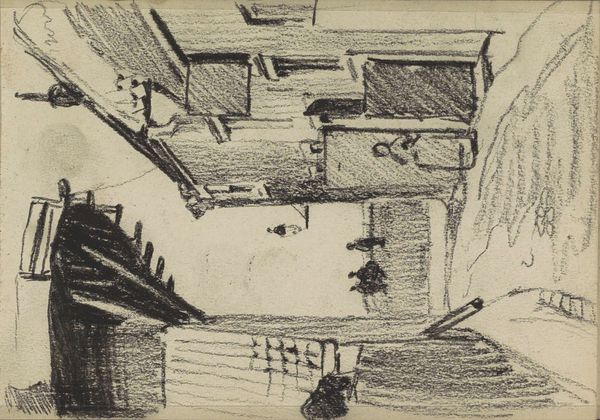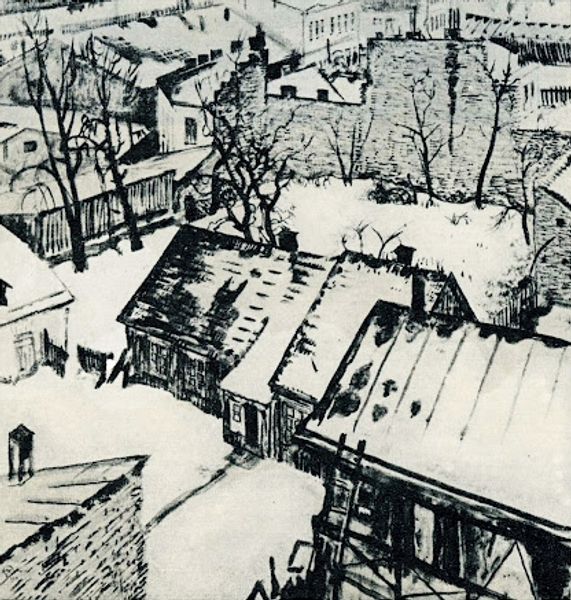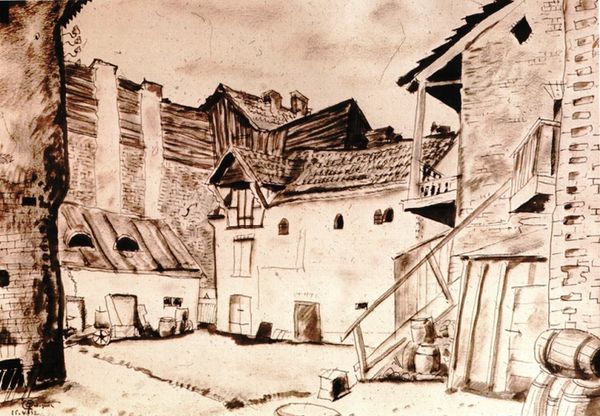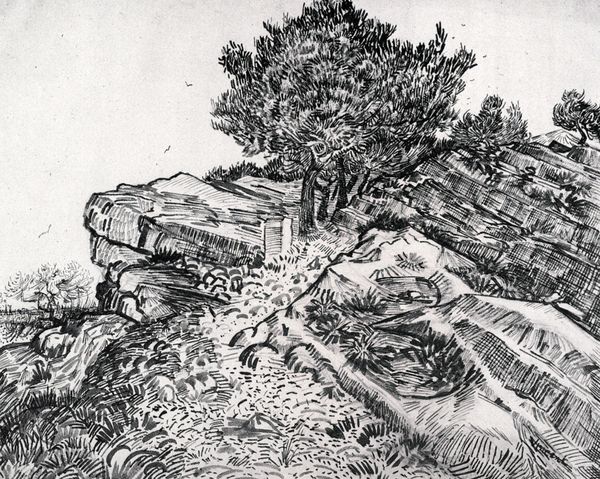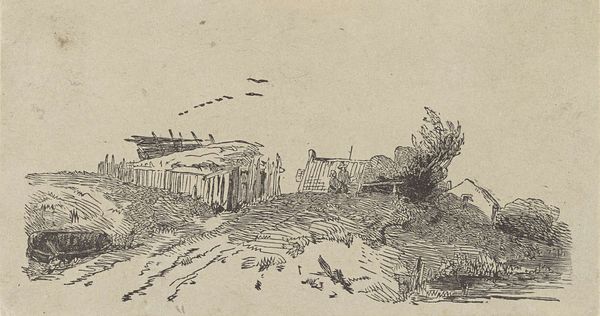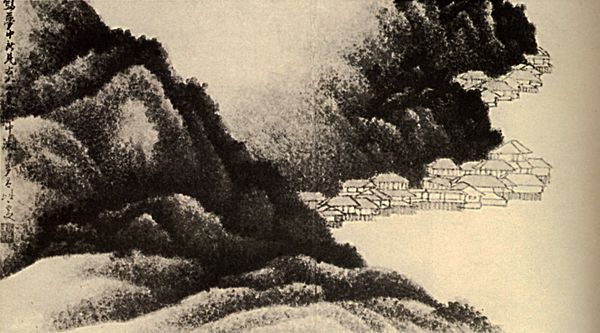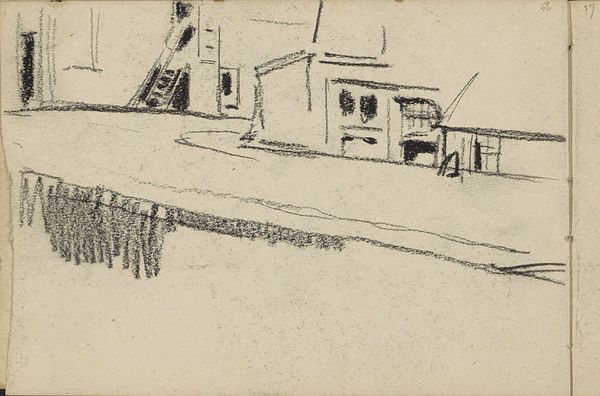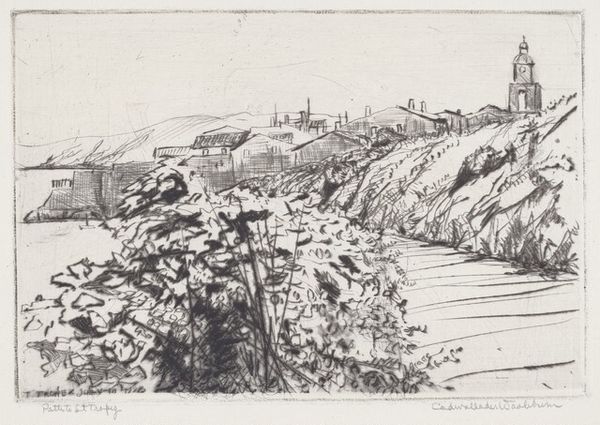
drawing, paper, ink, architecture
#
drawing
#
landscape
#
paper
#
ink
#
cityscape
#
post-impressionism
#
architecture
Dimensions: 30.5 x 47 cm
Copyright: Public domain
Curator: This is Van Gogh’s "Street in Saintes-Maries," a drawing rendered in ink on paper in 1888. The lines practically vibrate. Art Historian: It has a certain rawness, doesn't it? All of these downward sloping, almost menacing roofs, pressing in on that narrow path...it feels oppressive. Curator: Oppressive perhaps, but look at how the repeated strokes create depth and texture. The artist utilizes diagonal lines to imply a feeling of space—a brilliant use of linear perspective. Note too the thick layering that communicates spatial dimension. Art Historian: He made this in Saintes-Maries-de-la-Mer, a small fishing village in the Camargue, where he retreated in the summer of 1888. I wonder, did this reflect his state of mind at the time, this crowding sensation? Curator: Context, while interesting, is secondary to the art itself. I'm far more intrigued by the repetition of forms—those rooftop patterns—and the play of light and shadow he achieves solely with ink. How the ink hatches communicate light is incredibly significant to how he structures the piece, it moves the eye through his created world. Art Historian: I can't help but see it within the framework of his life. This was a period of great personal turmoil, exacerbated by his intense relationship with Gauguin. Surely, that tension bled into his work, manifesting as this cramped perspective. The place and conditions of living should always been taken into account. Curator: But the composition itself... isn't that the more universal language? The compressed space heightens the drama, regardless of Van Gogh's personal state. We read rhythm, dynamism. Art Historian: Perhaps. Yet art is never truly detached from its creator or the world they inhabit. Van Gogh chose to depict this street, and that choice, filtered through his experience, gives the artwork its weight. The very essence is imbued through a societal mirror. Curator: Still, when I see those stark, graphic lines, that pure use of ink, the starkness in which the buildings reflect each other... I see formal genius first and foremost. Art Historian: And I witness a poignant reflection of a soul caught in the currents of a tumultuous life and era. What would have been passing through the village during the age he drew this piece? Everything must be taken into account! Curator: Well, it certainly gives us much to consider—the dance between the personal and the universal, form and context. Art Historian: Precisely, the individual vision shaping and being shaped by its environment. It can certainly be difficult to choose.
Comments
No comments
Be the first to comment and join the conversation on the ultimate creative platform.
